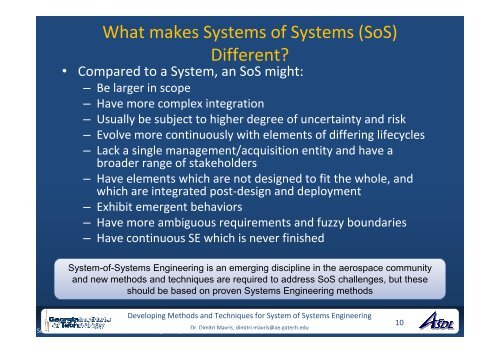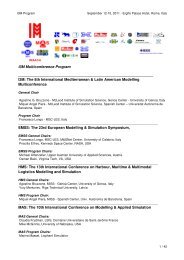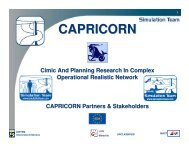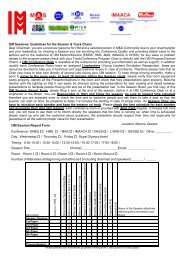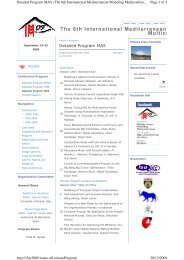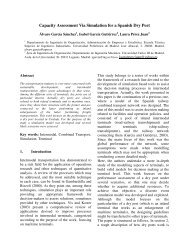System-of-Systems Engineering - Liophant Simulation
System-of-Systems Engineering - Liophant Simulation
System-of-Systems Engineering - Liophant Simulation
Create successful ePaper yourself
Turn your PDF publications into a flip-book with our unique Google optimized e-Paper software.
What makes <strong>System</strong>s <strong>of</strong> <strong>System</strong>s (SoS)Different?• Compared to a <strong>System</strong>, an SoS might:– Be larger in scope– Have more complex integration– Usually be subject to higher degree <strong>of</strong> uncertainty and risk– Evolve more continuously with elements <strong>of</strong> differing lifecycles– Lack a single management/acquisition entity and have abroader range <strong>of</strong> stakeholders– Have elements which are not designed to fit the whole, andwhich are integrated post-design and deployment– Exhibit emergent behaviors– Have more ambiguous requirements and fuzzy boundaries– Have continuous SE which is never finished<strong>System</strong>-<strong>of</strong>-<strong>System</strong>s <strong>Engineering</strong> is an emerging discipline in the aerospace communityand new methods and techniques are required to address SoS challenges, but theseshould be based on proven <strong>System</strong>s <strong>Engineering</strong> methodsDeveloping Methods and Techniques for <strong>System</strong> <strong>of</strong> <strong>System</strong>s <strong>Engineering</strong>Dr. Dimitri Mavris, dimitri.mavris@ae.gatech.eduSources: INCOSE SE Handbook v3, "Architecting Principles for <strong>System</strong>s-<strong>of</strong>-<strong>System</strong>s“ by Mark W. Maier, DoD SE Guide for SoS10


